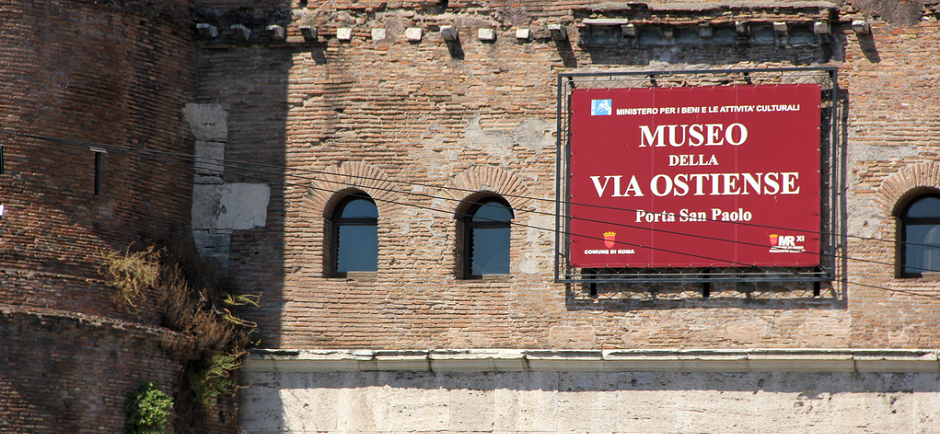Project Description
St. Paul’s Gate and Museum of the Ostian Way
St. Paul’s Gate is part of the complex of the Aurelian Walls, built by order of the Emperor Aurelian in 275 CE, and presents itself as one of the best preserved city-gates in the whole circuit of walls.
The Gate now appears isolated, but it was originally connected to that stretch of the Aurelian Walls descending from the hill of San Saba as far as the Pyramid of Caius Cestius. It was isolated from the walls as early as in 1920 to facilitate the traffic flow in the square, whilst the stretch of the wall that connected it to the Pyramid was destroyed during the bombing in 1943.
Today the Gate is home to the Museum of the Ostian Way, created in 1954 in order to illustrate the topography of the area between Roma and Ostia, which, in the Roman age, was hinged on this important arterial road. Within it are held materials issuing from that area; among them, worth particular notice, are three painted arcosolia from a tomb of the 3rd century CE near the Basilica of St. Paul and numerous plaster casts from inscriptions as well as funerary stones. On the first level of the two towers are exhibited two important models, made by Italo Gismondi, representing the ancient town of Ostia and the ensemble of the imperial ports of Claudius and Trajan. In the eastern tower there are remains of frescoes, dateable from a period comprised between the late 13th century and the early 14th century, which decorated a chapel wherein a Byzantine community used to convene.
Free entry
Address
Via Raffaele Persichetti, 3
How to get there
By metro: Line B, Piramide station
By tram: Line 3, Piramide stop





